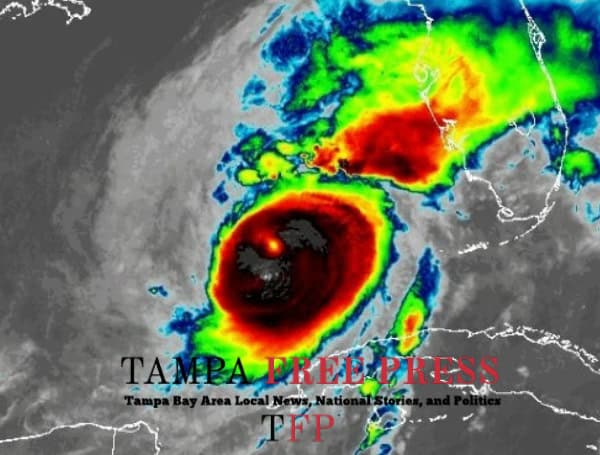AccuWeather’s long-range forecast for the summer of 2025 paints a picture of significant weather extremes across the United States, predicting widespread and potentially record-breaking heat, intensifying drought in key regions, and an active season for both severe thunderstorms and tropical cyclones.
Meteorological summer officially begins on Sunday, June 1, and forecasters warn that the subsequent three months will bring a combination of sweltering temperatures, volatile storms, heightened wildfire risks, and the early stages of a potentially dynamic hurricane season.
Sizzling Heat to Grip Central and Western US
Temperatures from June through August are expected to average above historical norms across much of the country. AccuWeather’s team, led by Senior Meteorologist Paul Pastelok, highlights the northern Rockies and the Plains as the areas facing the most intense heat, where daily temperature records could be challenged multiple times throughout the season.
READ: Breaking News: Fatal Four-Vehicle Crash Closes Northbound I-75 In Tampa
This prolonged heat will likely lead to increased energy consumption as millions rely heavily on air conditioning and cooling systems, potentially resulting in higher utility bills.
The East Coast and Appalachians are forecast to experience a more variable summer, with heat waves punctuated by showers and thunderstorms. However, forecasters note that increased humidity in these areas will often make AccuWeather RealFeel® Temperatures feel significantly higher, especially during sunny periods.
Specific forecasts for 90-degree days include 12-16 in New York City, 25-30 in Philadelphia, 45-50 in Atlanta, and 18-24 in Orlando. Out west, cities like Minneapolis (16-22 days), Denver (60-66 days), and Los Angeles (56-62 days) could see more 90-degree days compared to last year.
A concerning trend of warmer overnight temperatures is also expected to continue, particularly in urban areas. “Less relief from the heat at night can contribute to more heat stress and health issues,” warned AccuWeather Senior Meteorologist and Climate Expert Brett Anderson. “More people die from extreme heat than from hurricanes, tornadoes, floods and cold weather combined.”
Drought to Worsen, Fueling Wildfire Threat
The areas facing the most significant heat are also expected to grapple with worsening drought conditions. “Drought coverage will be widespread across the High Plains and West this summer,” Pastelok stated.
This is a departure from the more frequent rainfall experienced in the Midwest and northern Plains last summer and could have a substantial negative impact on the growing season for key crops like spring wheat, corn, and soybeans in the affected regions.
READ: Florida Hit-And-Run Kills Two Surveyors; North Carolina Truck Driver Arrested: FHP
The combination of intense heat and expanding drought will prime the landscape for a quickly escalating wildfire season. While the North American monsoon is forecast to bring some relief to the interior West later in the summer, the thunderstorms associated with it also pose a risk, as lightning strikes can ignite new blazes, particularly when the ground is driest at the start of the monsoon season.
Active Storm Pattern Expected, Including Derecho Risk
For parts of the East that may avoid the most extreme heat, an uptick in showers and thunderstorms is anticipated, including a risk of severe weather.
“The Gulf is warm and will lead to intense severe weather events into summer,” Pastelok explained. These storms could be more frequent in June and July than in August, with a particular concern for intense, widespread wind events known as derechos. The highest risk zone for derechos includes the northern Plains, the Ohio Valley, and the Tennessee Valley. Landfalling tropical systems later in the season could also contribute to tornado activity.
Safety remains paramount during thunderstorms. June, July, and August historically account for the highest number of lightning-related fatalities in the U.S., and AccuWeather forecasters urge the public to remain vigilant and seek shelter immediately whenever thunder is heard.
READ: Get Storm Ready: Treasure Island To Host Hurricane Expo
The North American monsoon is predicted to ramp up in late June across the interior West, potentially bringing above-normal rainfall. This could offer some drought improvement and heat relief but also increases the risk of dangerous flash flooding and mudslides.
Dynamic Hurricane Season Predicted, Potential for Early Start
AccuWeather is predicting a dynamic Atlantic hurricane season in 2025, which could get off to a quick start. “Drought can improve quickly early in the summer from Florida to the Carolinas due to frequent cool fronts and tropical moisture,” Pastelok noted.
The same warm waters fueling thunderstorms across the East could also spawn tropical storms and hurricanes in the Gulf, Caribbean, and Atlantic, especially in July and August. Forecasters highlight the potential for storm development even before the official June 1 start date, referencing 2024’s Hurricane Beryl, which formed in late June and became the earliest Category 5 on record before impacting the U.S. with tornadoes and power outages.
AccuWeather’s hurricane season forecast calls for 13 to 18 named storms, seven to 10 hurricanes, and three to six direct U.S. impacts. “Similar to last year, northern and eastern portions of the Gulf Coast and the Carolinas are at a higher-than-average risk of direct impacts this season,” said AccuWeather Lead Hurricane Expert Alex DaSilva. Atlantic Canada and the northeastern Caribbean are also identified as areas facing increased risk.
As summer approaches, residents across the United States are advised to stay informed about the forecast and prepare for a season marked by significant heat, the potential for severe storms, and a looming tropical threat.
Please make a small donation to the Tampa Free Press to help sustain independent journalism. Your contribution enables us to continue delivering high-quality, local, and national news coverage.
Connect with us: Follow the Tampa Free Press on Facebook and Twitter for breaking news and updates.
Sign up: Subscribe to our free newsletter for a curated selection of top stories delivered straight to your inbox.

